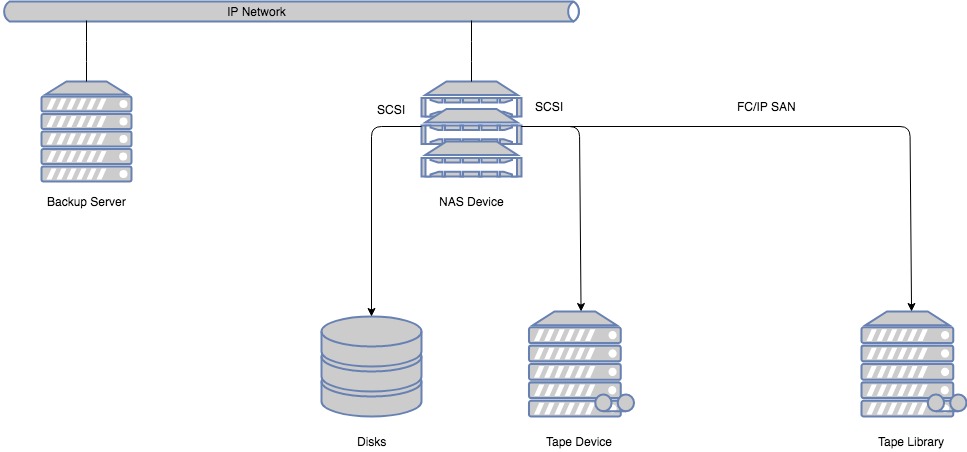The Network Data Management Protocol (NDMP) is currently the de facto approach for protecting NAS data. However, an increasing number of enterprises are exploring new approaches as their environments grow and the challenges and limitations associated with NDMP come to the surface.
A Short History of NDMP
More than two decades ago, NAS pioneer NetApp and backup vendor Intelliguard collaborated to solve an issue that was increasingly vexing NAS users – the inability to reliably protect their data. Up to that point, NAS platforms such as NetApp Filers were being backed up by having backup servers mount NAS shares and then moving the backup data to locally attached tape devices or a networked tape library. This solution was fraught with problems ranging from low performance due to the need to read every file over a POSIX interface, performance bottlenecks created by sending data over a single mount point, and managing multiple devices.

NDMP was first proposed by NetApp and Intelliguard in 1995 to address these challenges in protecting NAS platforms.* NDMP is officially defined as an “open standard protocol for network-based backup for network- attached storage.”** The protocol specifies a separation of the control path from the data path. Control traffic passes from the backup application to the NAS platform over an IP network while data traffic flows from the NAS platform to a storage medium over SCSI or over a Storage Area Network (SAN). NDMP also defines a mechanism for allowing a backup application to initiate and manage backup jobs running across multiple NAS devices. Each NAS device would then be responsible for preparing its files to be protected and for copying files directly to a locally attached or network attached storage device.
The advantages of NDMP include:
- Backup traffic could be offloaded to locally- or fibre channel-attached devices, avoiding the bottlenecks from streaming data across what was then typically 100 mb networks
- Eliminated the need for data management vendors to write special agents or unique device drivers to be installed for each NAS vendor’s solution. Each NAS vendor would build interfaces that adhered to the NDMP standard
- Centralized data management so that a single instance of a backup application could initiate and manage data protection for multiple NAS devices.
NDMP Limitations
Two decades later, NDMP is still the primary solution offered by most data management vendors. But NDMP has limitations that have only become more pronounced as the amount of protected data has increased over time. Limitations include:
- NDMP is designed to support single stream backups for each NAS device, which creates performance bottlenecks during the data transfer process, particularly as file systems have grown, as well as the number of unstructured files stored.
- To mitigate against performance bottleneck issues resulting from single stream backups and metadata scanning of large file systems, many backup vendors using NDMP offer image-level backups. However, this requires recovering the entire file system– even when only a single file needs to be recovered.
- Designed primarily to use tape as the backup target, backups using NDMP typically require periodic full backups to limit issues with slow restore times, which can occur with long chains of incremental backups.
- NDMP does not specify a data format for NAS backups, leaving that to the discretion of individual NAS vendors. This has created platform incompatibilities that prevent data protected from one NAS platform to be recovered to a different NAS platform. Customers are locked into a specific NAS platform and, even if they choose to move to another platform, they will likely need to maintain some instances of the previous platform to recover older files. Even if a customer commits to a single vendor, any changes in the data format from one version to another may necessitate maintaining multiple versions of the same vendor’s solution.
Protecting NAS with Rubrik
To ensure that customers are able to reliably protect their data and recover quickly from data corruption and data loss, Rubrik takes an approach that obviates the need for complex NDMP implementations. Rubrik does this by optimizing the discovery of changes in a file system and the copying of data from a NAS platform to a backup destination. The data is then stored in a industry-standard format to mitigate against lock-in to a particular vendor’s NDMP implementation.
To learn more about Rubrik’s next-generation approach to NAS protection, download our Protecting NAS at Scale with Rubrik white paper.
* Network Data Management Protocol (NDMP) White Paper – SNIA
** https://www.snia.org/ndmp
